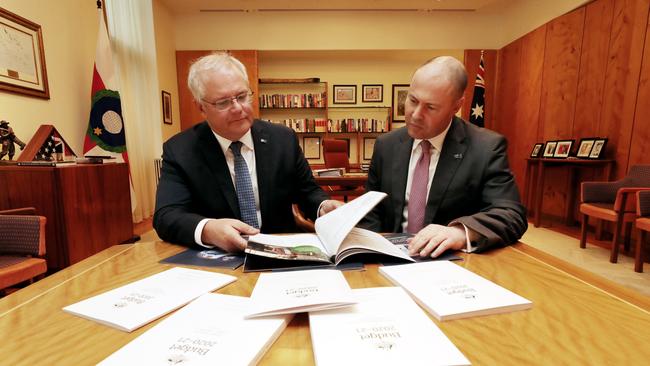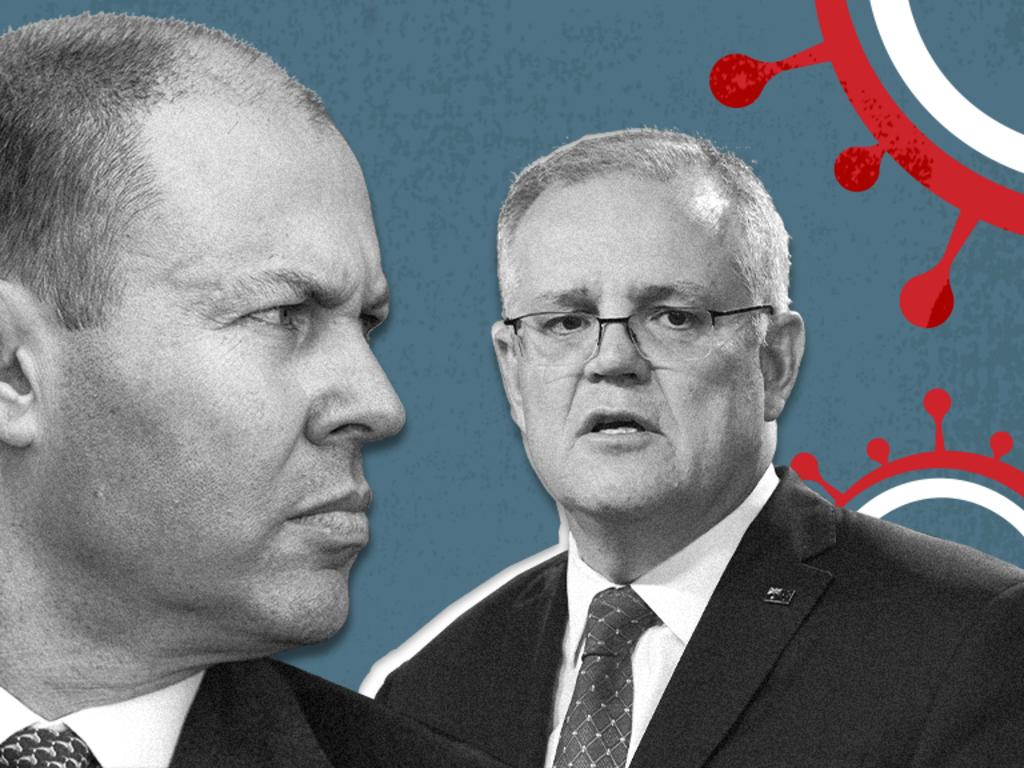Federal Budget 2020: Business in line for $98bn boost
In a budget free of bad news the government has announced a wide ranging package of stimulus measures aimed at unleashing a ‘wave of investment’.

Key measures
• Committed to invest an additional $14 billion in new and accelerated infrastructure projects.
• Businesses with turnover up to $5 billion will be able to deduct the full cost of eligible depreciable assets of any value in the year they are installed.
• For next two years companies with turnover up to $5 billion to offset losses against previous profits on which tax has been paid, to generate a refund.
• JobMaker Hiring Credit to grow in employment during the recovery by giving businesses wage credit incentives to take on additional employees that are young job seekers.
-
The Morrison Government is giving business a $98bn boost from a combination of accelerated personal tax cuts, generous short term investment allowances, temporary tax concessions and a $14bn in infrastructure spending to cushion the impact of the Covid induced recession and “kick start investment”.
Treasurer Josh Frydenberg said the temporary full expensing allowances, which were much larger than expected by the business community, would “unleash a wave of investment across the country” for a potential 3.5 million businesses, generating a potential $200bn in new investment.
A million small businesses are also estimated to benefit from temporary loss, carry back concessions giving loss making business a chance to get a tax refund before they move back into profit.
Another $2bn is being made available through the research and development tax incentive scheme.
At the same time, the government asking business to step up to the plate with a $4bn JobMaker hiring credit program aimed at providing jobs for half a million Australians under 35, as part of its plan to hold down unemployment rates as support schemes such as JobKeeper and JobSeeker phase out next year.
Business will also benefit from the establishment of a $1bn job trainer fund which is aimed at creating another 340,000 free or low cost training places for school leavers and job seekers.
In a Budget free of bad news – except for underperforming superannuation funds- the government has announced a wide ranging package of stimulus measures aimed at encouraging business confidence with a plan which it says will “create jobs, rebuild our economy and secure Australia’s future.”
The document is built on upbeat economic projections, which it says will see the Australian economy grow by 4.25 per cent in 2021 after a fall of 3.75 per cent this year, and unemployment fall to 6.5 per cent in the June quarter of 2022 after peaking at eight per cent by the end of this year.
The Business Council of Australia called the budget “the right budget at the right time.”
BCA chief executive Jennifer Westacott said the budget would go “a long way to restoring hope and giving us confidence that we can come back stronger and better than before.’
“By shifting from emergency support to targeted spending, the budget will help employers get back to business and get on with urgently creating the new jobs needed for the recovery.”
Small business focused-bank Judo praised the federal budget measures aimed at getting companies to lift their investment and hiring efforts.
“This is all going to lay the foundation for a strong bounce back,” co-CEO Joseph Healy said. “This (budget) is commended, targeted and substantial... It is hard to imagine what else they (the government) could have done.”
Mr Healy said the revised instant asset writeoff initiatives would deliver “a huge boost” to many businesses.
The budget documents show the wide ranging investment boosting program is aimed at offsetting the collapse in non-mining investment of 14.5 per cent expected in the 2020-21 financial year including an 11 per cent fall in housing investment.
It comes at a time when the export sector is fading with the sector falling by nine per cent in the 2020-21 financial year after a 1.6 per cent fall in 2019-2020.
Australia’s terms of trade, which have helped hold up the economy in recent years with strong commodity prices, expected to be down by 1.5 per cent in the current financial year and to plummet by 10.75 per cent in 2021-22.
The government is basing the budget on the assumption of economic activity in Australia picking up from later in the year and into early next year.
“The recovery is expected to be driven by a further easing of containment measures and improving business and consumer confidence,” the budget papers say.
“Activity will also be significantly supported by the government’s economic measures.”
One of the centre pieces of the budget for business will be the unexpectedly large investment allowances which will allow them to write off the full amount of any eligible assets they buy for their business until June 2022 including new cars, trucks and capital equipment.
The new measures, which the government says will apply to more than 99 per cent of businesses, be available for businesses with a turnover of up to $5bn.
Announcing the new scheme, Mr Frydenberg described it as a “game changer” which would “unlock investment and “boost the order books of the nation.”
As the Treasurer explained it, this will mean “a trucking company will be able to upgrade its fleet, a farmer will be able to purchase a new harvester, and a food manufacturing business will be able to expand its production line.”
New loss carry forward tax concessions will also help ease the pain of COVID induced losses for companies with a turnover of up to $5bn, allowing them to offset losses against previous profits in a move which the government says will “provide much needed cash flow support” for businesses.
The concession will allow companies which have incurred losses over the new few years to June 2022 to be offset against profits made in or after the 2018-2019 financial year.
He said this measure was aimed at helping business offset the impact of COVID-19 which had “turned fundamentally sound businesses into loss making businesses.”
Taking a deliberately upbeat tone, the Treasurer declared that “the Australian economy is now fighting back” with more than half of the people who lost their jobs now back at work.
Retailers such as Harvey Norman, JB Hi-Fi, will benefit from personal tax cuts due to take place in 2022 backdated to July 1 this year which will put extra cash in the pockets of more than 11 million tax payers.
The bring forward of the tax cuts, which are aimed at people with incomes below $90,000, will provide a stimulus of an extra $12.5bn over the next 12 months and $17.8bn over the next two years.
Mr Frydenberg said the measures would help create another 50,000 jobs by June 2022.
The Budget includes a $1.3bn modern manufacturing plan as part of the Prime Minister’s recent announcement which is aimed at encouraging the development of six key industries – food and beverage manufacturing, resources technology and critical minerals processing, medical products, recycling and clean energy, defence industry and space industry.
The budget also included a range of targeted measures including $317 million for Australian exporters to continue to access global supply chains and $350 million for regional tourism.
The housing industry will also benefit from an expansion of the First Home Loan Deposit Scheme to take in another 10,000 first home buyers, another $1bn of low cost finance to support the construction of affordable housing and a $150 million indigenous home ownership program.
Under the new JobMaker program, companies will receive a credit of $200 a week for hiring workers between 16 and 29 and $100 a week hiring those aged between 30 and 35 with eligible employees required to work a minimum of 20 hours a week.
Employers will need to show it leads to an overall increase in headcount, in a move which the government estimates will generate some 450,000 jobs.
While Frydenberg’s statement was deliberately upbeat, the budget numbers highlight the extent of the downturn.
It notes that company tax receipts are expected to come in $12.2bn lower in the 2020-21 financial year compared to the estimate made last December and $93bn lower than expected over the four years to 2023-24.
The building and construction sector will benefit from $14bn in new infrastructure spending on projects including roads, rail and bridges.
Projects include the Singleton Bypass and Bolivia Hill upgrade in New South Wales, the upgrade of the Shepparton and Warrnambool Rail Lines in Victoria, the Coomera Connector in Queensland, the wheatbelt secondary freight network in Western Australia, the main South Road Duplication in South Australia, the Tasman Bridge Upgrade in Tasmania, the Carpentaria Highway Upgrades in the Northern Territory, and the Molonglo River Bridge in the Australian Capital Territory.
The Budget also includes another $2bn investment in road safety upgrades, “shovel ready projects” which can stimulate activity in the short term.
Local government will benefit from another $1bn to upgrade local roads, footpaths and street lighting.
Other infrastructure investments include a $2bn in new funding to build vital water infrastructure across the country as part of our national water grid including dams, weirs and pipelines and $250 million to modernise recycling infrastructure, stopping more than 600,000 tonnes of waste ending up in landfill.
Adrian Dwyer, the chief executive of Infrastructure Partnerships told the Australian said the Federal Government had taken “a welcome step in backing the states and territories” with its $7.5bn commitment to transport projects and other infrastructure announcements.
But he said “getting this money out the door early” would be critical in delivering jobs sooner.
He said the Commonwealth Government should “build on this funding commitment with incentives that encourage the states to accelerate project delivery and get boots on the ground further.”







To join the conversation, please log in. Don't have an account? Register
Join the conversation, you are commenting as Logout